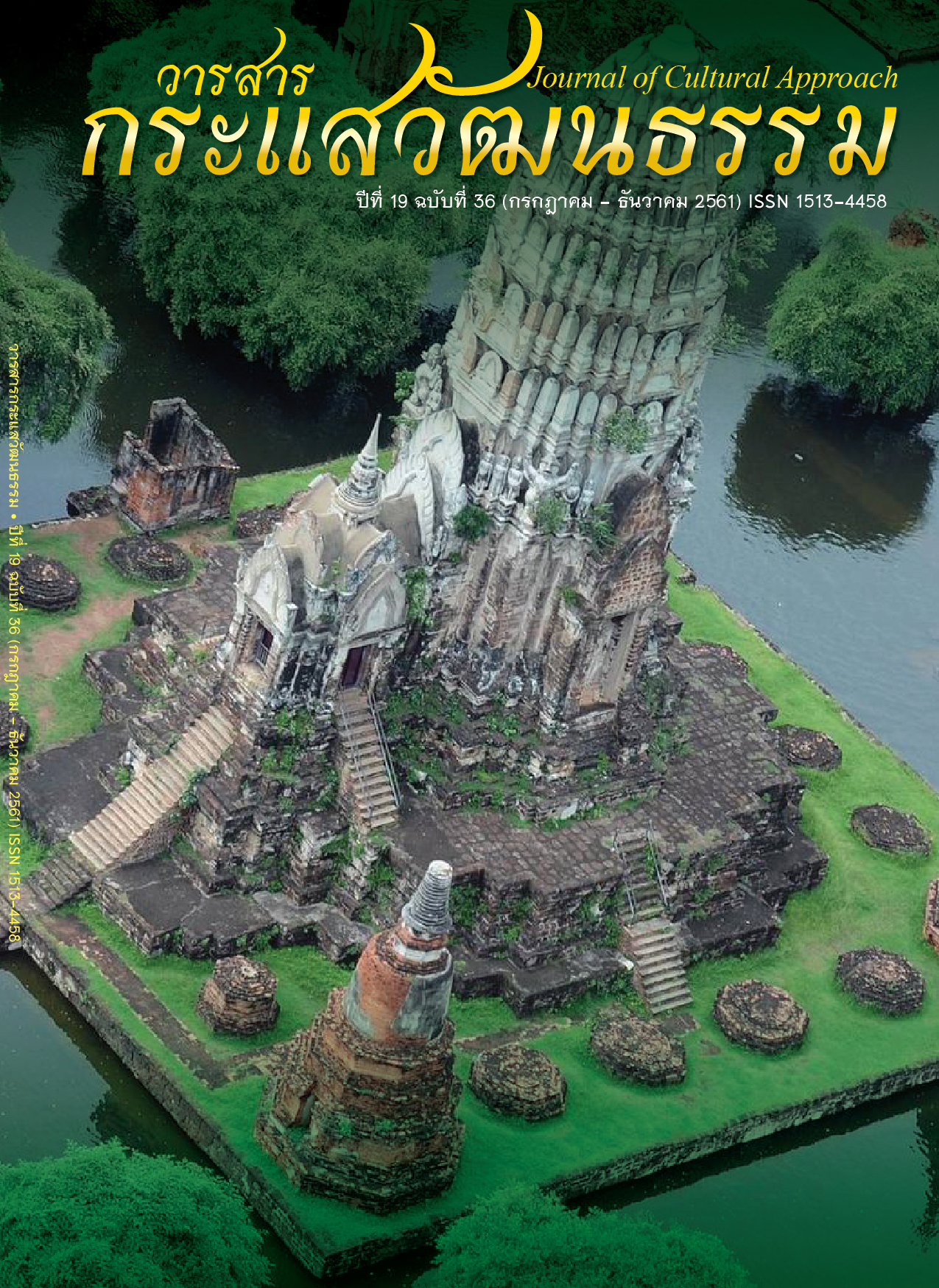The Comparison of Buddhist Era (B.E.) and Other Eras for Thai Tourist Guides
Main Article Content
Abstract
Thailand uses Buddhist Era (B.E.) as the tool for specifying the period of time now a day, which started one year after the Lord Buddha was extinguished to Nirvana. The Christian calendar (Christian Era, AD, C.E.) or Common Era (C.E.) which started since the Christ was born, was used from time to time (as now a universal calendar or Common Era). Furthermore, the Maha Sakkarat (Mo So), the Chunla Sakkarat (Cho So), the Ratanakosin Sok (Ro So), and Islamic calendar (Anno Hegirae, AH) were also used to identified the period of time in the old days. And the comparisons are very easy with the constant numbers are applied, such as: B.E. – 543 = C.E., B.E. – 621 = Mo So, B.E. – 1181 = Cho So, B.E. – 2324 = Ro So, B.E. – 1122 = AH. Hence, the Thai tourist guides should understand and remember all these constant numbers that relevance to each Era for better understanding of the duration of time that was recorded in different Eras in many historian records (including decade, century, and millennium), and use them rightly for explaining the historical situations to the tourists at all times.
Article Details
Proposed Creative Commons Copyright Notices
1. Proposed Policy for Journals That Offer Open Access
Authors who publish with this journal agree to the following terms:
- Authors retain copyright and grant the journal right of first publication with the work simultaneously licensed under a Creative Commons Attribution License that allows others to share the work with an acknowledgement of the work's authorship and initial publication in this journal.
- Authors are able to enter into separate, additional contractual arrangements for the non-exclusive distribution of the journal's published version of the work (e.g., post it to an institutional repository or publish it in a book), with an acknowledgement of its initial publication in this journal.
- Authors are permitted and encouraged to post their work online (e.g., in institutional repositories or on their website) prior to and during the submission process, as it can lead to productive exchanges, as well as earlier and greater citation of published work (See The Effect of Open Access).
Proposed Policy for Journals That Offer Delayed Open Access
Authors who publish with this journal agree to the following terms:
- Authors retain copyright and grant the journal right of first publication, with the work [SPECIFY PERIOD OF TIME] after publication simultaneously licensed under a Creative Commons Attribution License that allows others to share the work with an acknowledgement of the work's authorship and initial publication in this journal.
- Authors are able to enter into separate, additional contractual arrangements for the non-exclusive distribution of the journal's published version of the work (e.g., post it to an institutional repository or publish it in a book), with an acknowledgement of its initial publication in this journal.
- Authors are permitted and encouraged to post their work online (e.g., in institutional repositories or on their website) prior to and during the submission process, as it can lead to productive exchanges, as well as earlier and greater citation of published work (See The Effect of Open Access).
References
[2] Benchakhan, Phongsakon. (2012). Myanmar Era. Retrieved from https://www.gotoknow.org/posts/15589.
[3] Carmichael, A. (n.d.). What is the Meaning of BC and AD? And What does BCE and CE Mean?. Retrieved from https://carm.org/meaning-bc-ad.
[4] Cayce, E. (1995). The Edgar Cayce Companion: A Comprehensive Treatise of the Edgar Cayce Readings. (Frejer, B. E. Compiled). Virginia. USA. A.R.E Press (Association For Research & Enlightenment).
[5] Chinnaphat, Cho. (1998). The Intellectual Wit and Wisdom on One Thousand Years Calendars. Bangkok. Malai Press. (in Thai)
[6] Kaeothiam, Sorasak. (n.d.). Buddhist Century and Christian Century and How to Compare them. Retrieved from https://sites.google.com/site/lamhin3126/stwrrs-thi2.
[7] Luna XD. (2011). The Initiation of Chunla Sakkarat. Retrieved from www.thailocalgov2013.com/article.
[8] Mama, R. (2016, May 14). First Crescent Moon (Hilal) and Months Determination for Muslim Calendar for AH 1438. Retrieved from www.narit.or.th/index.php/astronomy-article/2742-hilal-1438.
[9] Ns, Jiranan. (n.d.). 1.2 How to Read and Compare Many Types of Eras. Retrieved from https://sites.google.com/sitesnsjiranan/1-2-kar-nab-laea-kar-periybtheiyb-sakrach-baeb-tang-4.
[10] Panuwat. (2011). The Duration of Time for Decade, Century, and Millennium. Retrieved from Panuwatstory’s Blog.
[11] Phongseephian, Winai. (2003). Date, Day, Time and Calendars. Bangkok. Ministry of Education.
[12] Ruchanon3010. (n.d.). How to Identify the Eras and How to Divide the Eras for Thai and Universal History. Unit 1; Time and Historical Period. Retrieved from https:// sites.google.com/site/ruchanon4512031/kar-nab-sakrach-laea-kar-baeng-yukh-smay-thang-prawatisastr-sakl-laea-thiy.
[13] Staffnut. (2010). How to Identify the Decade, Century and Millenium. Retrieved from www4.eduzones.com.
[14] Thammathat, Sahaphrom. (2013). Tamroi Suriyayat (Ton Thi 17). Horawet, 14(166), 22-28. (in Thai)
[15] Wikipedia (2017). Chunla Sakkarat. Retrieved from http//:th.m.wikipedia.org/wiki/Chula_Sakarat, Minor Era. (in Thai)
[16] Year of Naksat. (2014). What Year of Naksat Should it be. Retrieved from https://pantip.com.


